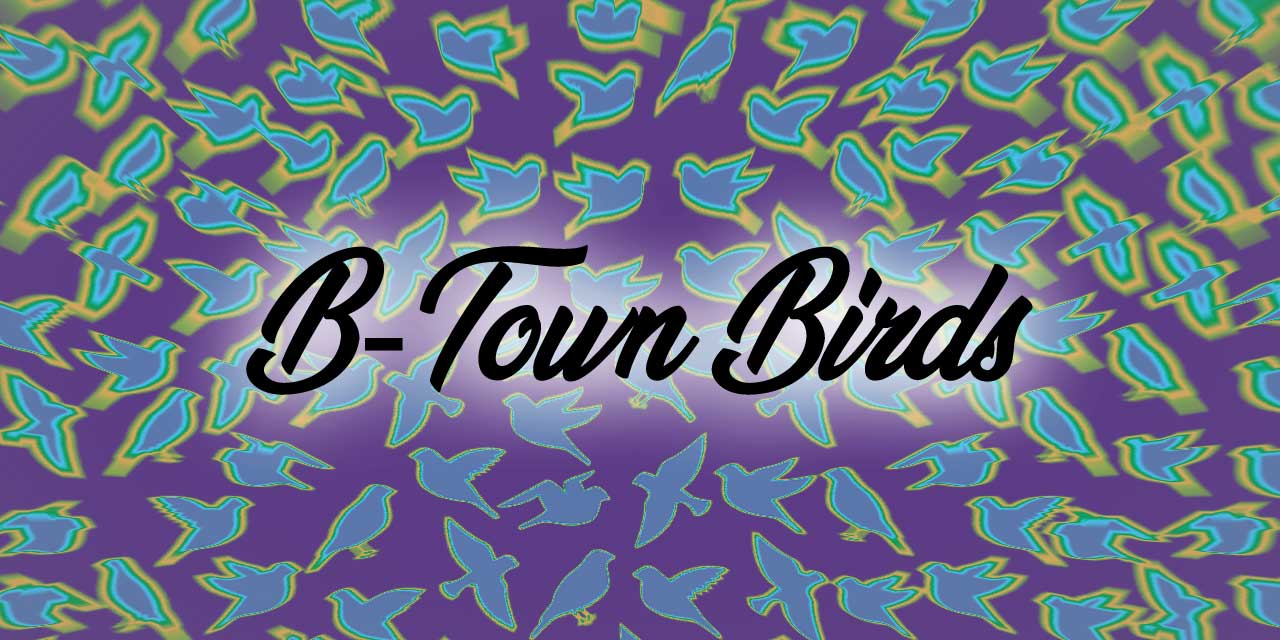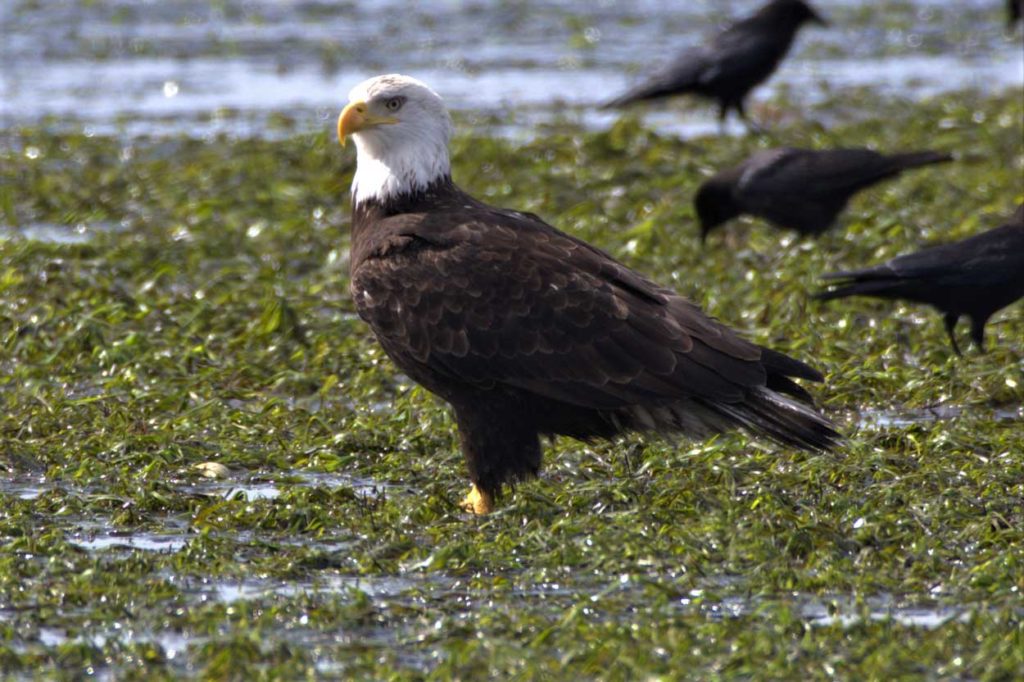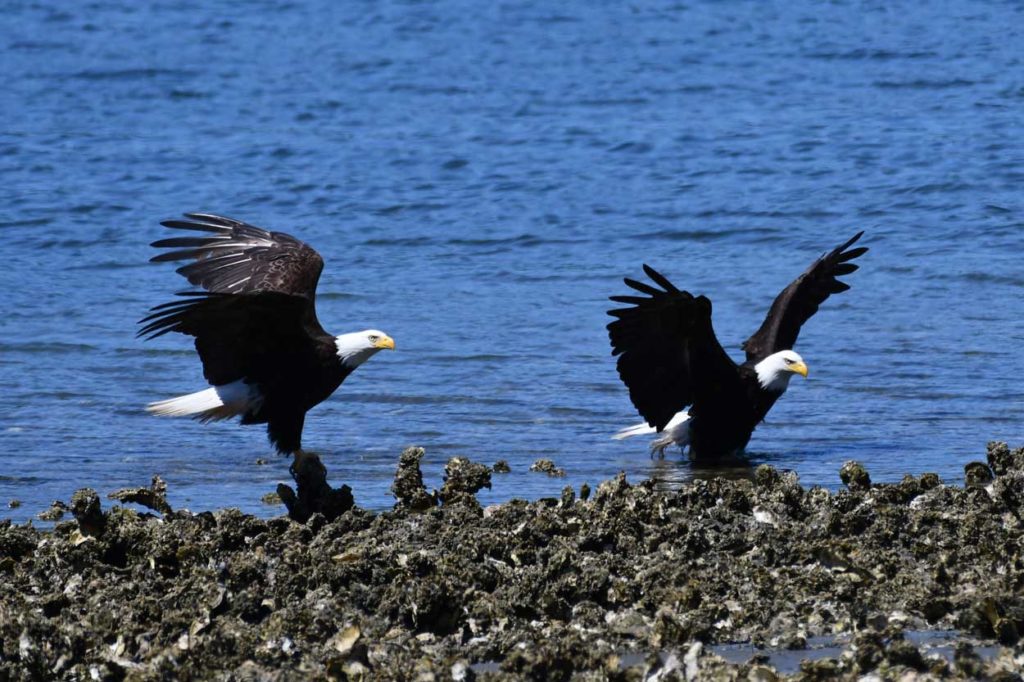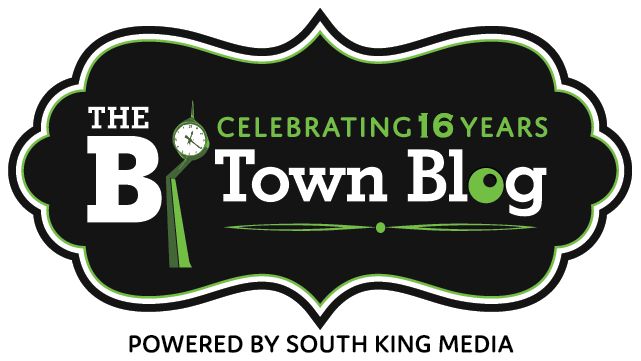EDITOR’S NOTE: Every week, columnist Neil Ball shares photos and profiles of local birds that he’s seen, studied and photographed in our area.
Meet the Bald Eagle
By Neil Ball
The adult Bald Eagle is unmistakable. With their dark brown body, white head and feet and yellow talons and beak, they are a stunning bird. Males and females are colored alike, but the female Bald Eagle can be up to 25% larger than the male. Identifying the juveniles is a little harder. The juvenile Bald Eagle can take five years to develop the distinctive color scheme. They will start off as just being dark brown, but will become more mottled, with white streaks in the chest and wings. In this phase, they are often mistaken for a hawk.
The Bald Eagle was almost wiped out in the lower 48 states by the widespread use of DDT. It was not the insecticide itself that was killing the eagles, but the chemical affected the eagle’s ability to produce hard eggs. The soft eggs were easily crushed by the parents trying to incubate them. But the eagles have made a miraculous recovery. They can now be found in the 48 contiguous states, Alaska, most of Canada and northern Mexico. While it is still protected, it is no longer considered to be threatened.
The Bald Eagle is an opportunistic feeder. Their preferred fare is fish which they swoop down and snatch off the surface of the water. They will also grab waterfowl using the same technique. But the eagles are not above scavenging the dead and dying salmon after their spawning, or stealing food from other predators, including other eagles.
Eagles are grand nest builders often using the same nest year after year. They prefer nest sites high is sturdy trees close to their food source, the water. Each year the eagle reuses the nest, they will do a remodel adding another layer onto the last year’s structure. The largest eagle nest ever recorded was over 9 feet wide, 20 feet deep and weighed over a ton.
Bald Eagles are sacred birds in many North American cultures. Their feathers and talons are used in ceremonies and in costumes. Because the eagle’s feathers are protected, there is a National Eagle Repository where dead eagles are kept, and their parts are distributed to registered users. It is illegal to possess an eagle feather unless you are registered and have obtained it from the Repository.
The Bald Eagle is, of course, our national bird. Selected by the Continental Congress in 1784, the eagle is depicted carrying a sheave of 13 arrows in one talon and an olive branch in the other signifying peace through strength. The Bald Eagle was not the first choice of Benjamin Franklin, however. While popular opinion is that he preferred the Wild Turkey over the eagle, it is true that he felt the Bald Eagle had “bad moral character.” If he had gotten his way, Thanksgiving would be a little different.
Questions, suggestions, requests? E-mail me at BTownBirdMan@gmail.com.




